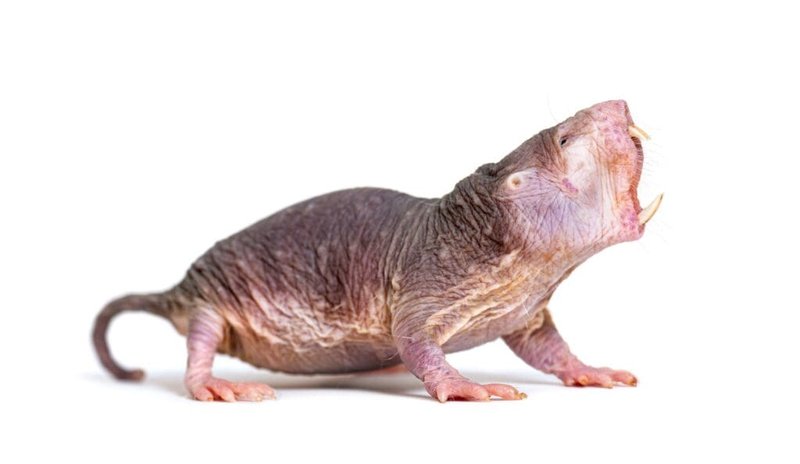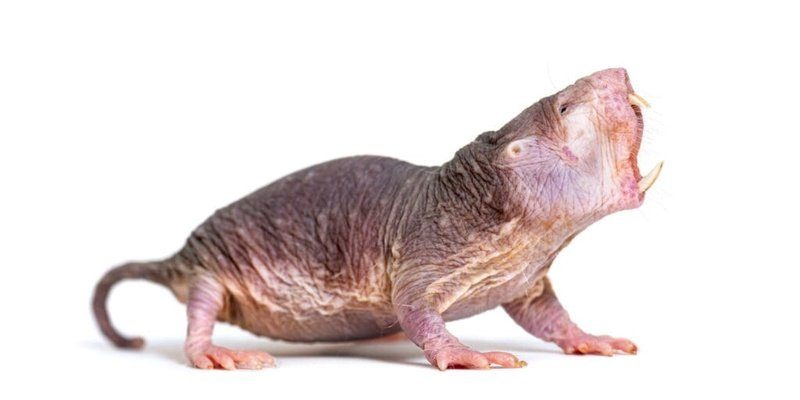
You might be wondering where these stories come from and why they persist. Well, as with many animals, the naked mole rat is often misunderstood. Perhaps it’s because of their unusual appearance or their unique lifestyle. Let’s clear up some of the most common myths and misconceptions surrounding these fascinating animals so you can appreciate them, quirks and all.
Myth 1: Naked Mole Rats Are Ugly
Honestly, beauty is in the eye of the beholder, right? When people first see a naked mole rat, their initial reaction is often one of shock. Those hairless bodies and wrinkled skin can catch you off guard. But calling them “ugly” is a bit unfair. In their own way, naked mole rats are uniquely adorable. Think about puppies or kittens—many people initially find them a bit odd looking, but we all love them for their charm.
These creatures have adapted perfectly to their underground life. Their wrinkled skin helps them navigate through tight tunnels, and their lack of fur reduces the risk of overheating in their warm, humid burrows. Plus, they have these incredible strong teeth that stick out, which help them dig tunnels. Nature has a funny way of designing creatures to fit their environment, and the naked mole rat is a perfect example.
Myth 2: Naked Mole Rats Are Simple Creatures
You might think that since naked mole rats live such sheltered lives underground, they’re not very intelligent. But here’s the thing: they are surprisingly complex. These little guys live in highly organized colonies, much like ants or bees. Each colony can have around 75 members, all working together to survive.
The social structure is pretty impressive. There’s usually one dominant female known as the queen, who does most of the breeding, while the other members serve specific roles—like foragers or tunnel diggers. Their cooperation and communication resemble a well-oiled machine! They even have different sounds to signal alarm or call for food. Who knew these quirky rodents had such social finesse?
Myth 3: Naked Mole Rats Are Completely Hairless
Yes, they’re called naked mole rats, but this doesn’t mean they’re entirely hairless. They do have some very fine, soft hair, particularly on their feet and around their faces. This hair isn’t just for show—it actually helps them navigate through their tunnels.
Additionally, the lack of fur is an adaptation to their underground environment. It might seem extreme, but living in a humid, dark world means they don’t need thick fur to insulate themselves. Instead, they have specialized skin that helps regulate moisture and temperature. So, even in their unusual nakedness, there’s a clever engineering system at play.
Myth 4: Naked Mole Rats Are Related to Mice and Rats
You might think that naked mole rats are just a type of rat because of their name, but they’re actually more closely related to porcupines and chinchillas! They belong to a different family called Bathyergidae. This family is entirely different from the typical rodents we think of when we hear the word “rat.”
While they may share some physical characteristics with typical rats and mice, their behaviors, habitat, and even their social structures are quite different. If you see a naked mole rat in a zoo, don’t assume you’re looking at a common rodent. You’re witnessing a whole different branch of the rodent family tree!
Myth 5: Naked Mole Rats Are Vicious and Aggressive
It’s easy to label an animal as aggressive just because of its appearance. Naked mole rats, however, are not vicious creatures. Like many social animals, they can be protective of their territory and colony, but they are generally not harmful to humans.
In fact, most interactions with humans—even in captivity—show that these rats are quite docile. They might nip if they feel threatened, but who doesn’t? Their real aggression is reserved for defending their tunnels against other colonies. This behavior is simply part of their instinct to survive in the wild, not a reflection of their everyday demeanor.
Myth 6: Naked Mole Rats Are Short-Lived
One of the strangest things about naked mole rats is their longevity. Most rodents have short lifespans, often just a couple of years. But naked mole rats? They can live up to 30 years in captivity! This is quite astonishing when you think about it.
Scientists are studying their unique biology to understand why they age so slowly. They don’t seem to suffer from common age-related diseases like cancer or heart disease, which raises fascinating questions about aging itself. Who knows? They might hold the key to understanding how to extend our own lifespan!
Myth 7: Naked Mole Rats Are Not Important to Science
It might surprise you to learn that naked mole rats are not just quirky creatures—they’re vital to scientific research! Their unique traits, like their incredible resistance to pain and cancer, have made them invaluable in medical studies.
For instance, researchers are studying their skin cells to understand how they resist tumors. This could potentially benefit human medicine and lead to breakthroughs in cancer treatment. So the next time you hear someone say they’re just weird little rodents, remind them they have a significant role to play in advancing science.
Naked mole rats may seem odd or even intimidating at first glance, but they’re really fascinating animals with a lot to teach us. Every myth we’ve tackled reveals a little more about their amazing adaptations and unique lifestyles. These quirky critters show us that there’s so much more to life than what meets the eye.
In our journey of understanding naked mole rats, we’ve learned that they’re not just bizarre beings but rather essential players in the ecosystem and in scientific research. So the next time you hear someone talk about naked mole rats, you can step in with some knowledge and appreciation for these incredible animals!

